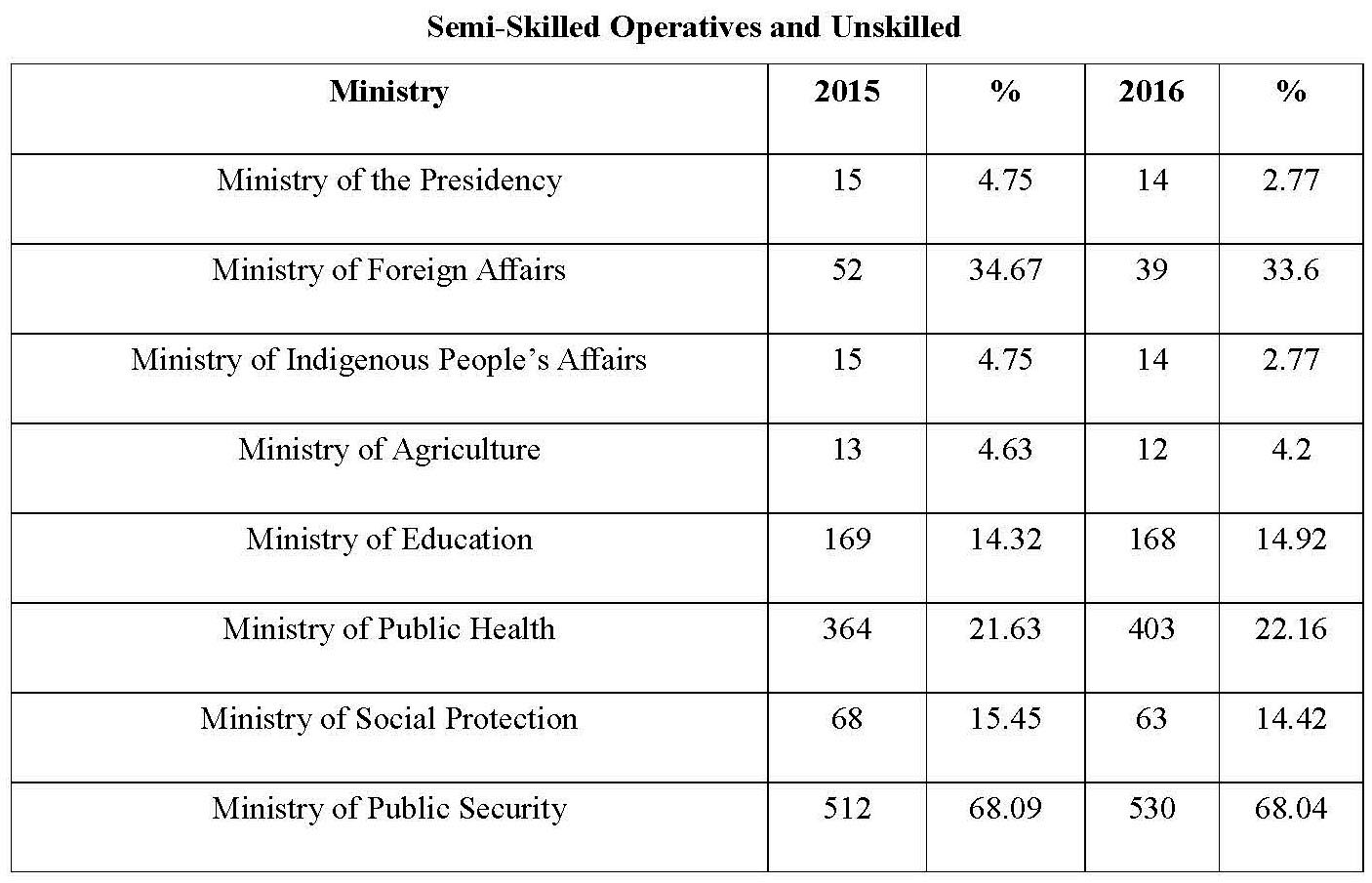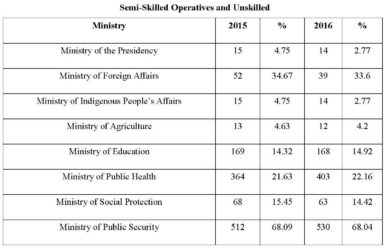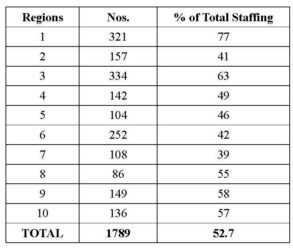Dear Editor,
A review of the first National Estimates passed in Parliament in 2016 showed an interesting catergorisation of the job hierarchy in the Public Service. Of particular interest is the proportion of the category identified as ‘Semi-skilled Operatives and Unskilled’ to overall staffing. The sampling extracted below may be of some surprise to the very agencies themselves.
This has been a long established and unchallenged categorisation which has existed without any indication of the mechanism used to discriminate between ‘semi-skilled’ and ‘unskilled’, in any case providing a licence for substantial padding of the manning levels. For example, at a distance, it is something of an irony that in the Ministry of Education this category of employee constitutes nearly 15% of the overall staffing with 168 ‘operatives’.
The situation is noticeably less healthy in the Ministry of Public Health, with 403 or 22% of total staffing being Semi-skilled Operatives and Unskilled.
However, the latter was ominously outnumbered by the Ministry of Public Security with 530 or 68% of total staffing. Surely this high percentage is deserving of a deliberate investigation, unacceptable as it must be to the concept of ‘security’.
But it is in the Regional Administrations that this proliferation is more obvious, to the point of at least embarrassment, again demanding not only explanation, but better a forensic audit.
How does one assess value for money from these categories of employees?
Well, coming out of the latest Table available the related salary scales for the above with effect from are 1st January, 2016 are:-
Band 2 ‒ $55,000-$82,351 monthly; Band 1 ‒ $55,000-$60,638 monthly.
Interestingly, the above are the bottom two of a fourteen band salary structure. Utilising the minimum of the respective scales is not a problem, since it is exactly the same ‒ $55,000 per month. The conservative costs for a total of 1,789 employees would be at the very least in the order of $98,395,000 (per month) or approximately $1.2 billion per budget year.
In the absence of any known formal mechanism to first, monitor recruitment; second, differentiate semi-skilled from unskilled; third, effectively evaluate the outcomes of performance, how can it be convincingly argued that this is not an area of substantial subsidy in respect of the Public Service as a whole?
Yours faithfully,
EB John








